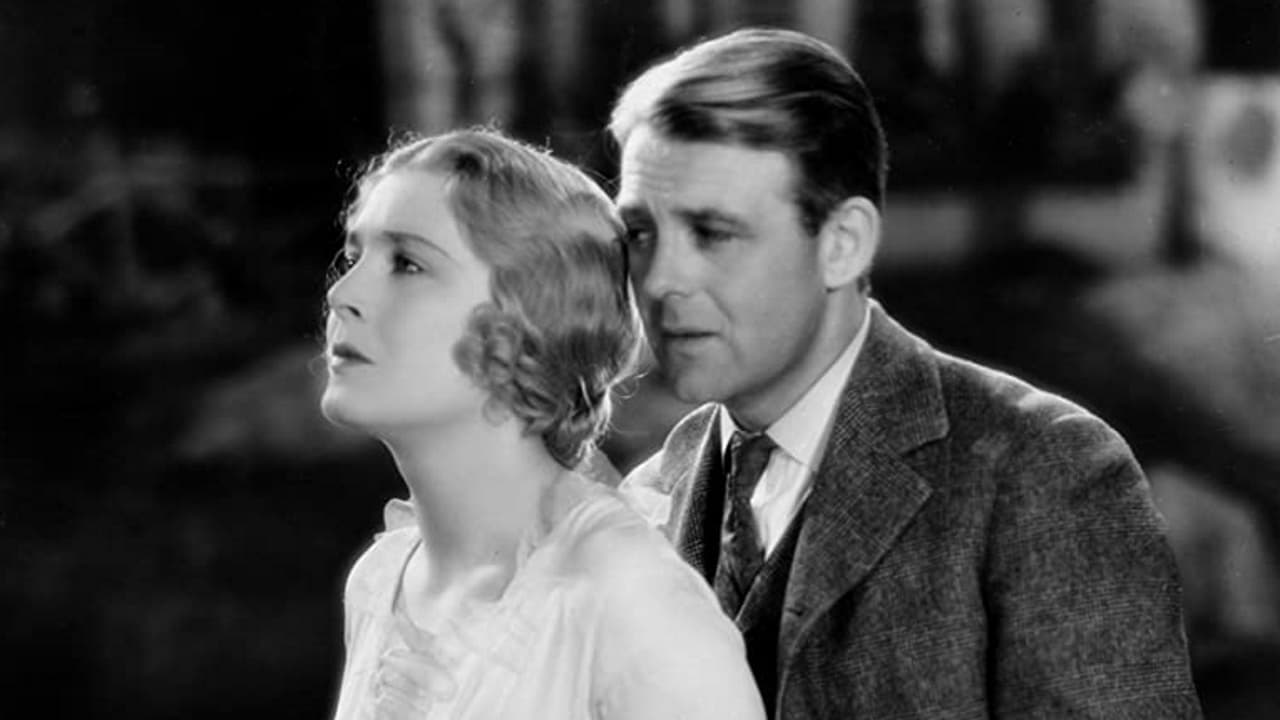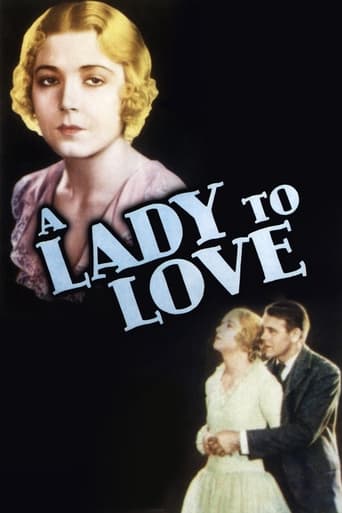

This movie has been obscured by the later, more famous version of Sidney Howard's play, the one starring Charles Laughton and Carole Lombard. One can see why. The pace is much slower, and the emotions are not so volatile. And though it makes a kind of sense to cast Edward G Robinson, who the same year played the title role in Little Caesar, as the Italian winemaker Tony, why use an actor 20 years too young for the part? Robinson is aged with a broad white, skunk-like streak through his dark hair. However, his performance, especially in the dramatic final scene, is quite touching, certainly more so than Laughton's grotesque one.As the mail-order bride, deceived with a photo of the handsome young foreman, Vilma Banky is even more sympathetic. Her strong native Hungarian accent emphasises that she, like Tony, is an insecure immigrant in this complex and confusing country--Lombard was obviously native American and was also much more capable looking. The later movie also has an overlay of Hollywood gloss, and is less true to life than this one, whose characters are naive and socially awkward. This version also has the benefit of Victor Sjostrom, the great Swedish director who directed Lillian Gish and Garbo. While the movie at times seems slow, even a bit stilted, it has a delicacy and a close appreciation of character and nature that contributes its own emotional pull to this simple, touching story.Though the movie pre-dated the Production Code, the ending of the play has been changed. The later film also changed the ending, but in a less satisfactory way. While, in this film, one character suddenly takes on a new personality, it otherwise makes more sense than that of the Laughton-Lombard movie. To put the review in a nutshell: I cried at the end of this one, and at the other one I didn't.
... View MoreEdward G. Robinson plays Tony, an Italian-American. And, Buck plays his brother, Buck. So, why does Tony have a super-heavy Italian accent and Buck has none?! I cannot understand this...and audiences, too, must have been baffled by this one! In addition, the leading lady, Vilma Bánky (Lena) puts on a REALLY heavy Italian-ish accent...although she was supposed to have lived in San Francisco for many years. Perhaps it's because this is an early sound picture...but someone should have been paying attention to these details in "A Lady to Love".Tony wants to get married. After all, he's middle-aged and has a huge vineyard in Napa...but no woman. So, when he sees a nice lady in San Francisco he does what any rational man would do...he doesn't talk to her but instead sends her a letter proposing marriage to her. Because he's not a handsome guy, he includes a photo of his handsomer (at least by comparison) and much younger brother...and she agrees. But she naturally expected Tony to be Buck...and right before the wedding, Tony is horribly injured...his legs are smashed. Yet, inexplicably, she still agrees to marry Tony. Problems develop, naturally, when she finds herself much more attracted to her brother-in-law instead of her new husband.The film is hindered by Robinson's performance. While I think he was a terrific actor normally, here he plays an Italian with no subtlety...he's loud and makes Chico Marx seem like a thespian by comparison! His performance a decade later as a Scandinavian-American in "Our Vines Have Tender Grapes" was subtle and beautiful...but her in "A Lady to Love" he's everything but subtle or beautiful. In fact, ALL the Italian-Americans (except for Buck) are VERY loud...which might be true of Italian families in general...but here they seem to practically SCREAM!! It's also interesting to see that to demonstrate his connection with America and his homeland, he portraits BOTH of the President AND Mussolini on the wall (you can see it behind Lena during the wedding. This was NOT unusual back in the day, as in the 20s and 30s Mussolini was revered by many Italians both at home and abroad.I could also detect little in the way of greatness in the direction of this film, it was made by the famous Swede Victor Sjöström---who was famous for his silent films as well as starring in Ingmar Bergman's "Wild Strawberries". I think this might demonstrate that Sjöström was more of a silent film director (after all, he only directed a hand full of talking films and dozens of silents). He just wasn't at his best with talking pictures and perhaps he didn't recognize the accents as being that overdone (after all, Swedish was his first language). There was also a lot of overacting in addition to the ridiculously heavy accents. The film really would have benefited from closed captions because of all this.As a result of these factors, this film is very dated and is best for Robinson completists like myself who simply want to see all his films...both great and not so great!
... View MoreVilma Banky was a famous silent film star, brought over from Hungary in the mid-20s by Sam Goldwyn. She was an instant star in films like THE EAGLE with Rudolph Valentino and THE WINNING OF BARBARA WORTH with Ronald Colman. Her talkie debut was in 1929 in THIS IS HEAVEN; it was a notorious flop. A LADY TO LOVE would be Banky's final American film and her second attempt at a talkie. And it's a very good film indeed.Banky plays a waitress in San Francisco who is spotted by an immigrant grape grower (Edward G. Robinson) who has come to the city to find a wife. He brings the waitress to Napa for an arranged marriage but she is immediately attracted to Robinson's foreman (Robert Ames). Although Robinson has fallen and broken is leg, the wedding takes place (she wants a home and things) but on their wedding night, Banky has a fling with Ames.Ames then goes away and leaves Banky with Robinson. She nestles into her newfound safe haven and takes care of Robinson. Over a period of a few months she discovers she has fallen in love with the doting Robinson, but then Ames returns and threatens to make trouble.Robinson (in his third talkie)is, as always, a total pro. And even with an Italian accent and a wild white white, he's a pleasure to watch. Ames is OK in the thankless part of the cad. Supporting players include Henry Armetta and George Davis as foolish workers, Anderson Lawler as the doctor, Lloyd Ingraham as the priest, and Richard Carle as the postman.But Banky is front and center here as Lena. Much was made of her failure in talkies because of her thick accent. After this film flopped she made a couple films in Europe and retired from the screen. But I was struck throughout this film at what a nice voice she had and how much her accent resembled that of Greta Garbo in ANNA Christie that same year. THIS IS HEAVEN is apparently a lost film so we may never be able to judge Banky's talkie debut. But her second effort is solid.The best scene in the film is where Banky attempts to give Robinson a bath while he's in bed (with a broken leg). It's a giddy and delightful scene, especially with his aversion to water.Banky was long married to silent star Rod La Rocque. He continued in talkies as a supporting player through the early 1940s.
... View MoreA beautiful story of love, that reminded me of Greta Garbo's "Anna Christie". I loved Vilma Bankee's voice and accent. I felt that the film was charming in it's "innocence" and simplicity, while dealing with a very complex issue. I hope that I may someday see it again.
... View More